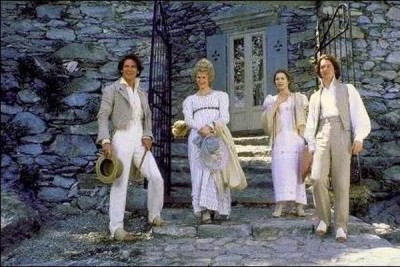Mary Shelley Month: A Laboratory of Fiction
 A fun, exciting (and challenging) way to go for it writing fiction, all at no cost for you: This June 2019 we will bring together a group of writers here at the Wellstone Center for a binge of fiction-writing with a few selected individuals primed to dive right into a fresh project and pursue a short novel with feverish intensity and a lack of caution, but always with a depth of seriousness and attention to detail. Our hope is to jolt into existence – like poor, doomed Viktor Frankenstein – two or more works of fiction that we can publish by March 2020 through our Wellstone Books imprint (distributed nationally through Ingram) – though we’re also happy to talk about participating writers taking the fruits of their labor elsewhere, under agreed-upon guidelines. Writers will stay two to four weeks (or in some cases, for one week) and put long hours every day into writing, reading their new work aloud to fellow Mary Shelley Month participants, and unwinding together here and there, through walks on our trails through the redwoods, twice-a-week yoga and evening meals together (unlike our normal routine, we’ll cook for you all month). For our Mary Shelley Month, we’re going to explore how, in the company of other writers to help brainstorm and develop ideas, a fiction writer can go from genesis of an idea to early drafts to polished drafts to publication in a contracted time frame. Not every project launched in such a way will make it all the way to completion, but it will be a hell of a ride going-all out to try to make it happen and push boundaries. Each writer will focus on her or his own project, but will also endeavor to help other writers think ideas through and ask questions like, “What would this character do in this situation?”
A fun, exciting (and challenging) way to go for it writing fiction, all at no cost for you: This June 2019 we will bring together a group of writers here at the Wellstone Center for a binge of fiction-writing with a few selected individuals primed to dive right into a fresh project and pursue a short novel with feverish intensity and a lack of caution, but always with a depth of seriousness and attention to detail. Our hope is to jolt into existence – like poor, doomed Viktor Frankenstein – two or more works of fiction that we can publish by March 2020 through our Wellstone Books imprint (distributed nationally through Ingram) – though we’re also happy to talk about participating writers taking the fruits of their labor elsewhere, under agreed-upon guidelines. Writers will stay two to four weeks (or in some cases, for one week) and put long hours every day into writing, reading their new work aloud to fellow Mary Shelley Month participants, and unwinding together here and there, through walks on our trails through the redwoods, twice-a-week yoga and evening meals together (unlike our normal routine, we’ll cook for you all month). For our Mary Shelley Month, we’re going to explore how, in the company of other writers to help brainstorm and develop ideas, a fiction writer can go from genesis of an idea to early drafts to polished drafts to publication in a contracted time frame. Not every project launched in such a way will make it all the way to completion, but it will be a hell of a ride going-all out to try to make it happen and push boundaries. Each writer will focus on her or his own project, but will also endeavor to help other writers think ideas through and ask questions like, “What would this character do in this situation?”
We’re focusing in particular on fiction that will be:
TOPICAL: We’re intrigued by fiction that starts with a mind-bending question or setup – call it “What if?” fiction – like Orwell’s 1984 or Atwood’s The Handmaid’s Tail.
NARRATIVE-DRIVEN: We’re not looking to pursue overtly literary fiction, or self-consciously postmodern, for example; for this project we’d like writers to emphasize character-driven story with a strong narrative pull. Popular fiction with an edge?
FRESHLY CONCEIVED: We want the ideas pursued with us during Mary Shelley Month to have originated with us. That leads to questions about when an idea becomes an idea. It’s fine to have kicked different general notions around before. But if you’ve devoted more than a writing day or two to a new manuscript, that would count as an already existing project.
EXAMPLES: Books that focus on a narrow time frame – a day, a week – are a good fit for what we have in mind – challenging as the narrow time frame is, it tends to help generate suspense. Near-future imaginative takes could work well for this project – for example, a novel set in the world of professional sports, in the near future, taking off on current trends written by someone with detailed knowledge of the world of sports; or a novel looking at trends in how political candidates are launched; or a novel imagining climate change a decade into the future, all against a nuanced depiction of world political bodies.
“Writers work in isolation,” novelist Thad Nodine, who spent time at the Welltone Center as a Bookshop Santa Cruz Writing Fellow, told us. “To be able to get help with story-boarding, to think through how characters react to situations – that sounds very exciting to me. We’re always limited by our own imaginations and the experiences we have. To be able to work with a group of writers, and to be able to think through how characters would react to situations and expand our own horizons to ways of thinking that are beyond your own patterns, that sounds to me like it has tremendous potential. As writers we’re always trying to stretch boundaries. To be able to do that upfront, rather than when you’ve written a chapter or a book manuscript, that could be very exciting. It’s like what people who write for TV or film do. We don’t get to do that as fiction writer.”
HOW IT WILL WORK: Writers who apply and are accepted will spend anywhere from one to four weeks here in June, always arriving on a Monday, at no cost to the writer. We provide a room to stay. We share evening meals, all part of the group dynamic, and visiting writers are asked to cook one night per week. We’ll also have afternoon and evening sessions to share work in progress and brainstorm ideas, working a given idea through, like story-boarding in film, to help the individual writer advance the development. We know there is an element of randomness to the creative process – and we fully understand that not every writer who comes will necessarily see a given idea through to completion. We want to help as many writers get as far as they can in their time with us, even as they help inspire their fellow resident-writers and help give them ideas. Participating writers are eligible to have their novels published with us through Wellstone Books by May 2020 (we’re looking at shorter novels, generally in the 50,000-to-60,000-word range). If writers want to take their finished novels elsewhere, we’d ask for a smallish donation to support future Mary Shelley Months here at the Wellstone Center.
The project starts with the idea that, for a variety of reasons, fiction-writing has become a hothouse flower, capable of producing great beauty, great wonders, often remarkably refined in their sensibilities, but too often walled off from the random rush of events of the real world. The fiction writers of an earlier era were often former newspaper reporters, used to making the rounds, soaking up atmosphere in a union hall, a crooked politician’s lair or a dive bar, schooled in human nature. The current model calls for the vast majority of fiction writers to have been pulled through the MFA pipeline, often a valuable catalyst for the flowering of talent, but not alas a great teacher in the life we find outdoors or in the street. We approach this project with the question: Can we try to open up fiction-writing, to let it be more impetuous and driven, less careful, less dictated by agent advice or the years-long logic of letting one draft molt into another?
INSPIRATION: For all their fame, the crew from which we draw inspiration was an unlikely enough assemblage: They were more than a little crazy, the driven and talented group of young people who gathered in a villa overlooking Lake Geneva in the surreal summer of 1816 to talk for hours about life and love and science and human potential, to drink and get high,  but above all to inspire each other to write, write, write. A volcanic blast had shrouded the upper atmosphere with dust and ash and all of Northern Europe that summer was cold and overcast and given to bizarre lightning storms. Lord Byron was twenty-eight by then (only eight years removed from his untimely death from fever), already a major poet, but he’d recently fled England, deep in debt and scandal, never to return. He joined his friend Percy Shelley to talk writing for hours, sometimes joined by Percy’s future wife, Mary Wollstonecraft Godwin, her stepsister, Claire Clairmont, and Byron’s physician, John Polidori. That June they read German ghost stories aloud and Byron offered a challenge to the group, each to write a ghost story. Out of that challenge came Mary Shelley’s Frankenstein, Polidori’s The Vampyre and other work.
but above all to inspire each other to write, write, write. A volcanic blast had shrouded the upper atmosphere with dust and ash and all of Northern Europe that summer was cold and overcast and given to bizarre lightning storms. Lord Byron was twenty-eight by then (only eight years removed from his untimely death from fever), already a major poet, but he’d recently fled England, deep in debt and scandal, never to return. He joined his friend Percy Shelley to talk writing for hours, sometimes joined by Percy’s future wife, Mary Wollstonecraft Godwin, her stepsister, Claire Clairmont, and Byron’s physician, John Polidori. That June they read German ghost stories aloud and Byron offered a challenge to the group, each to write a ghost story. Out of that challenge came Mary Shelley’s Frankenstein, Polidori’s The Vampyre and other work.
TO APPLY: Write to Steve Kettmann, co-director of the Wellstone Center, at steve@wellstoneredwoods.org and submit: a brief autobiographical sketch, no more than 100 words; a CV or listing of major writing credits (eligible writers need some writing credits – this is a project for writers with proven track records); availability in June and preference of how many weeks (transportation expenses are covered by the writer, not by us), and a brief note on why we should consider you for this project and why you think you’d be a good fit, no more than 250 words. Feel free to share this page with friends and on social media. Deadline to apply: April 1, 2019.

